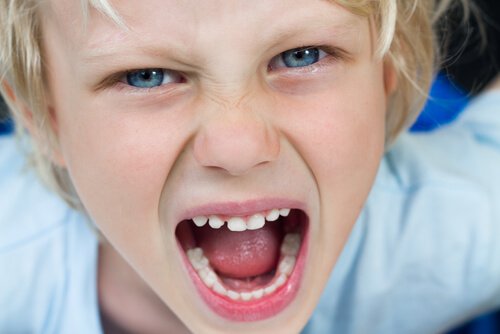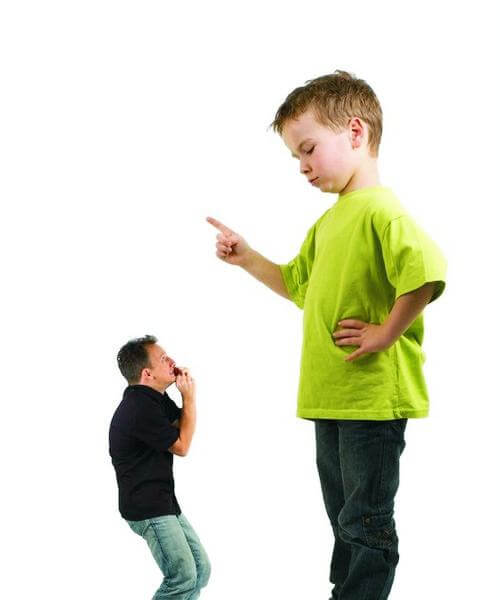Raise Your Children without Setting Limits, and It Will Backfire

You may have the best intentions in the world, but they may only result in ingratitude. This is the case when it comes to raising children, in the limits you set — or do not set.
There are a lot questions and doubts parents have about how to raise their children. And in this process, each family dynamic has its own unique emotional aspects. Especially when it comes time to set limits. It’s common for parents to doubt themselves and feel like “bad parents.” And where is this more true than setting limits and rules in the family?
You may doubt yourself quite often as you raise your children. Am I doing a good job? Is the option I’m choosing the correct one? Even though I’m convinced this is the right call, why do I have all of these doubts?
What does a limit consist of?
Many people think the word “limit” is negative. They think that setting limits implies not taking the child’s opinion into consideration. However, setting limits is actually worlds away from things like yelling, getting angry or neglect. Rather, it has more to do with structure, regulating and teaching. Setting limits doesn’t mean raising your voice. It also doesn’t imply disrespecting the other person.
Educating means saying “no” to requests that shouldn’t or can’t be granted. It means teaching your child that sometimes you have to wait in order to get what you want. Teaching also means consequences for certain behaviors that need to be corrected. And then it means being consistent and following through with the decisions you make.

In order to do this, parents don’t necessarily have to raise their voice or constantly threaten their children. The message can be transmitted calmly, clearly, and without repeating yourself. It’s not smart to toss out empty threats.
“Dad, will you get me a Peppa the Pig cake?”
Imagine you’re in a supermarket and your daughter wants you to buy her a Peppa the Pig cake. There’s no reason to buy the cake, no birthday coming up, so you say no. Your daughter insists and starts crying. Then comes the temper tantrum. Naturally, you get embarrassed because people around you can’t help but watch the spectacle.
Then you get angry, and just want it to end, so you buy her the cake. Your daughter shuts up, because now she’s happy with her cake. You stop feeling embarrassed, and you can finish grocery shopping.
When parents give in, they feel relieved because their children have stopped crying. The shame or embarrassment goes away, and the anger can end too. However, unfortunately the girl has learned that she can use temper tantrums to get what she wants.

If it turns into a habit, your child will likely just throw more temper tantrums. It could do the opposite of what you want; it could turn into the normal way they get what they want.
Patterson and his negative reinforcement trap
Patterson’s theory of coercion and his negative reinforcement trap explain the previous example very well. It talks of how it’s less costly and simpler in the short-term for parents to give in to their children. Yet, in the long-term the cost will actually be much greater since the inappropriate behaviors will increase exponentially.
When they’re in the middle of the inappropriate behavior, such as a temper tantrum, hitting or threats, parents just give in and both parties “feel good“. On one hand, the parents get the child to stop and behave. On the other, the child gets what they want.
Patterson’s negative reinforcement trap explains how parents experience relief when they give in. They manage to make the temper tantrum stop, while the child gets what they want.
Not setting limits: what are the consequences?
People who grow up without clear limits usually have a very low tolerance for frustration. They have a hard time controlling their emotions. Plus, they don’t respond well to having to follow the rules and meet obligations. These people tend to manipulate others and make them feel bad to get what they want.

Disrespect, privilege, inconsistency, impatience, laziness: these are some consequences of not setting limits from the beginning. The child may have trouble playing nice with others, develop behavioral problems or aggression, and even destroy objects.
One behavioral problem relevant here is oppositional defiant disorder, characterized by constantly defying or breaking rules. Children with this disorder often grew up being the ones giving the orders and making the decisions.
If you don’t educate your child, who will?
Psychologist Teresa Rosillo recently said in an interview, “we have forgotten to tell children that it’s the parents who are in charge.” In many homes nowadays the child gets the last word. The adults organize their schedules and lives to accommodate the child’s every request and whim.
One of the most basic things we as parents have to do is teach our children to self-regulate. However, in order for the child to regulate himself, he must have previously undergone external regulation.
Parents have the duty to set limits that will be frustrating to their children, and then teach their children to handle the feeling of being frustrated. Parenting is not an easy job. But, if the parents don’t do it, who will?
This text is provided for informational purposes only and does not replace consultation with a professional. If in doubt, consult your specialist.








